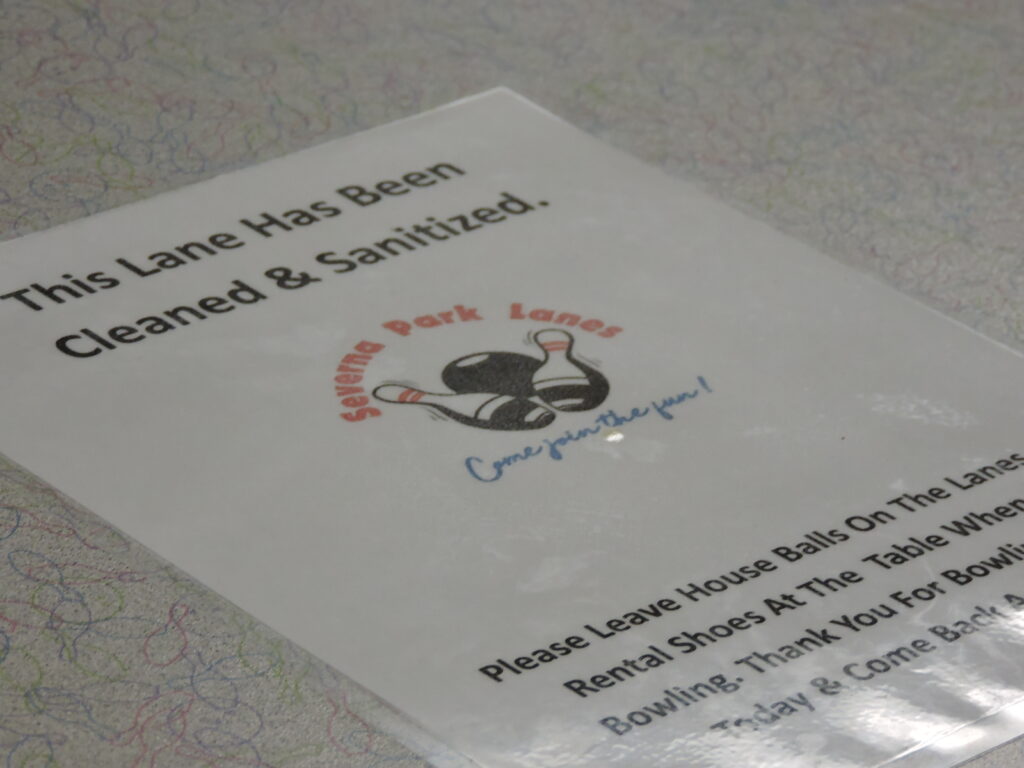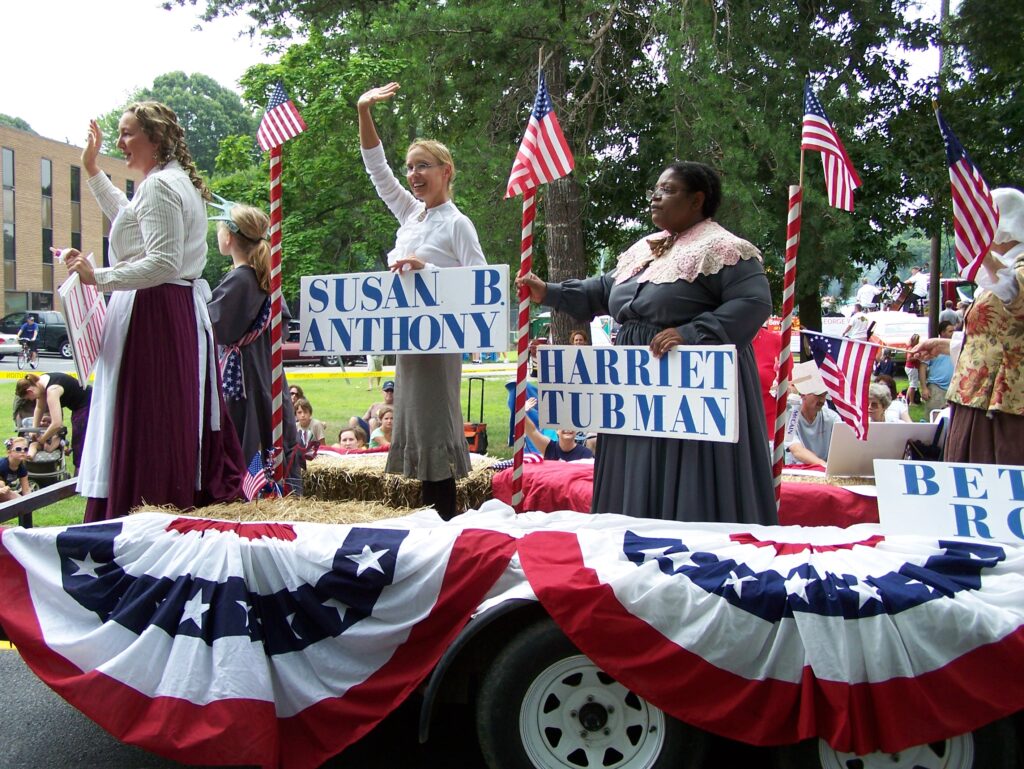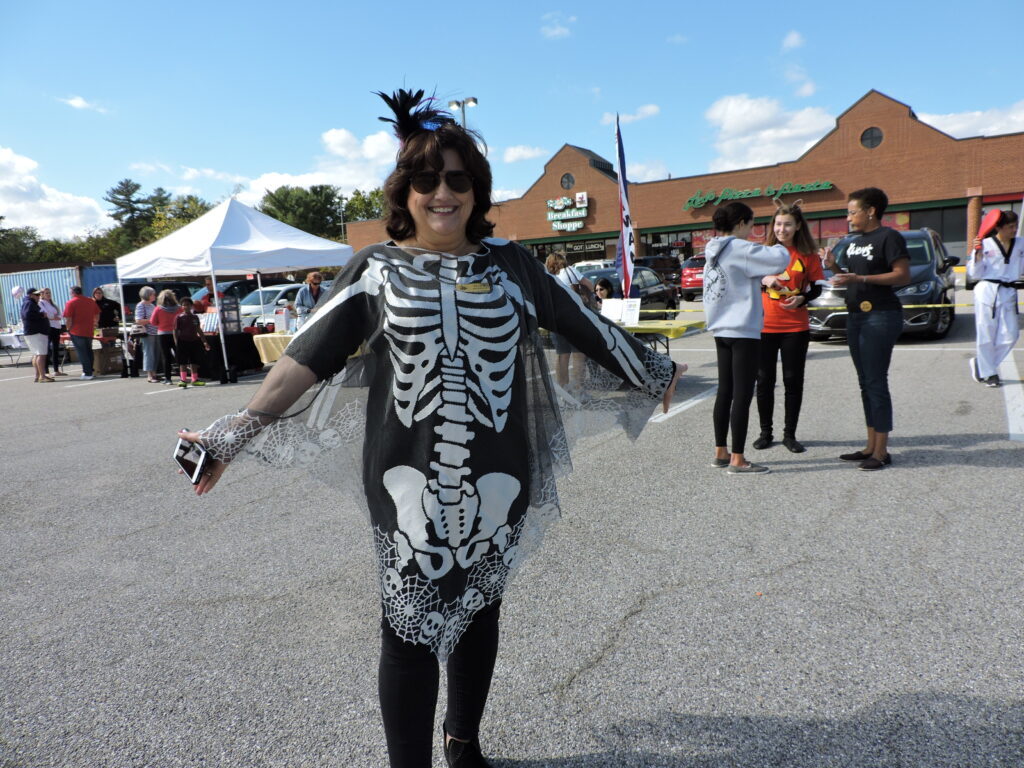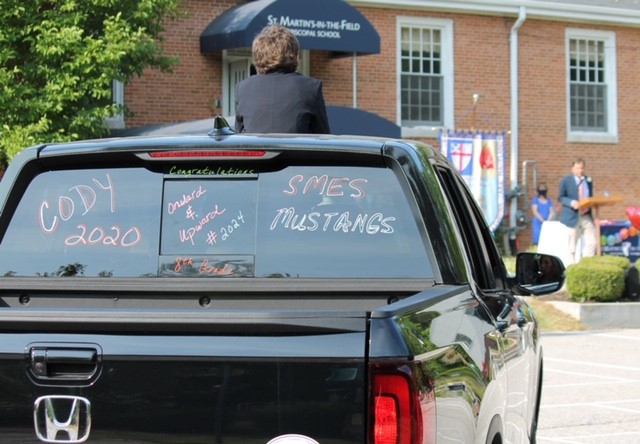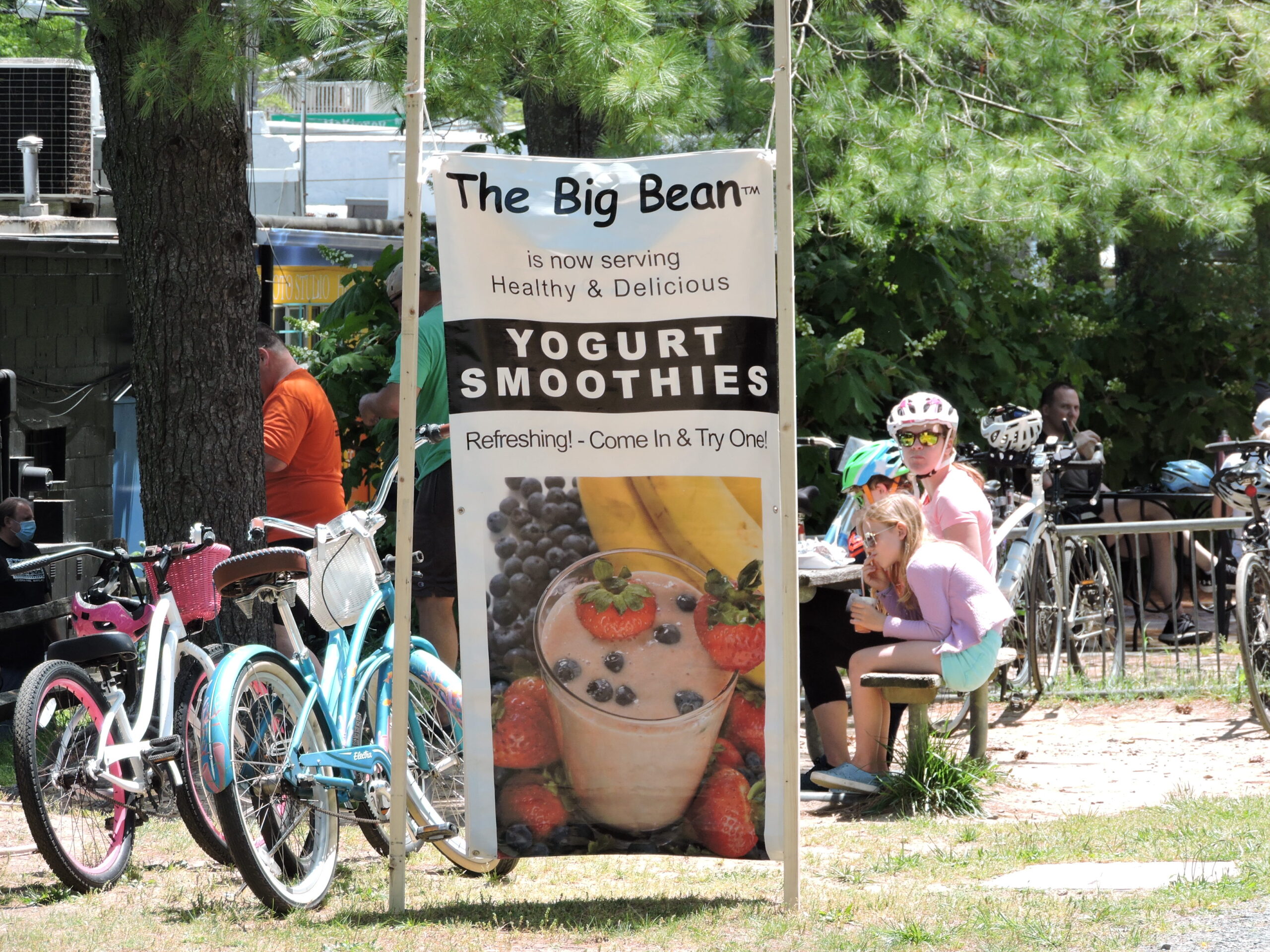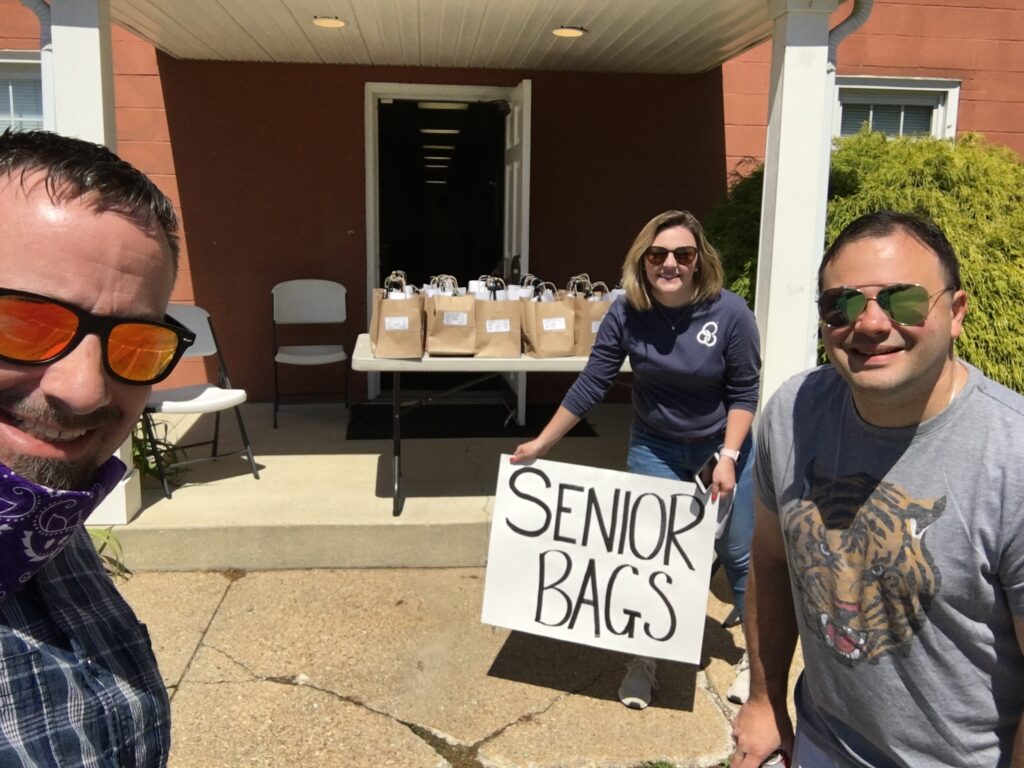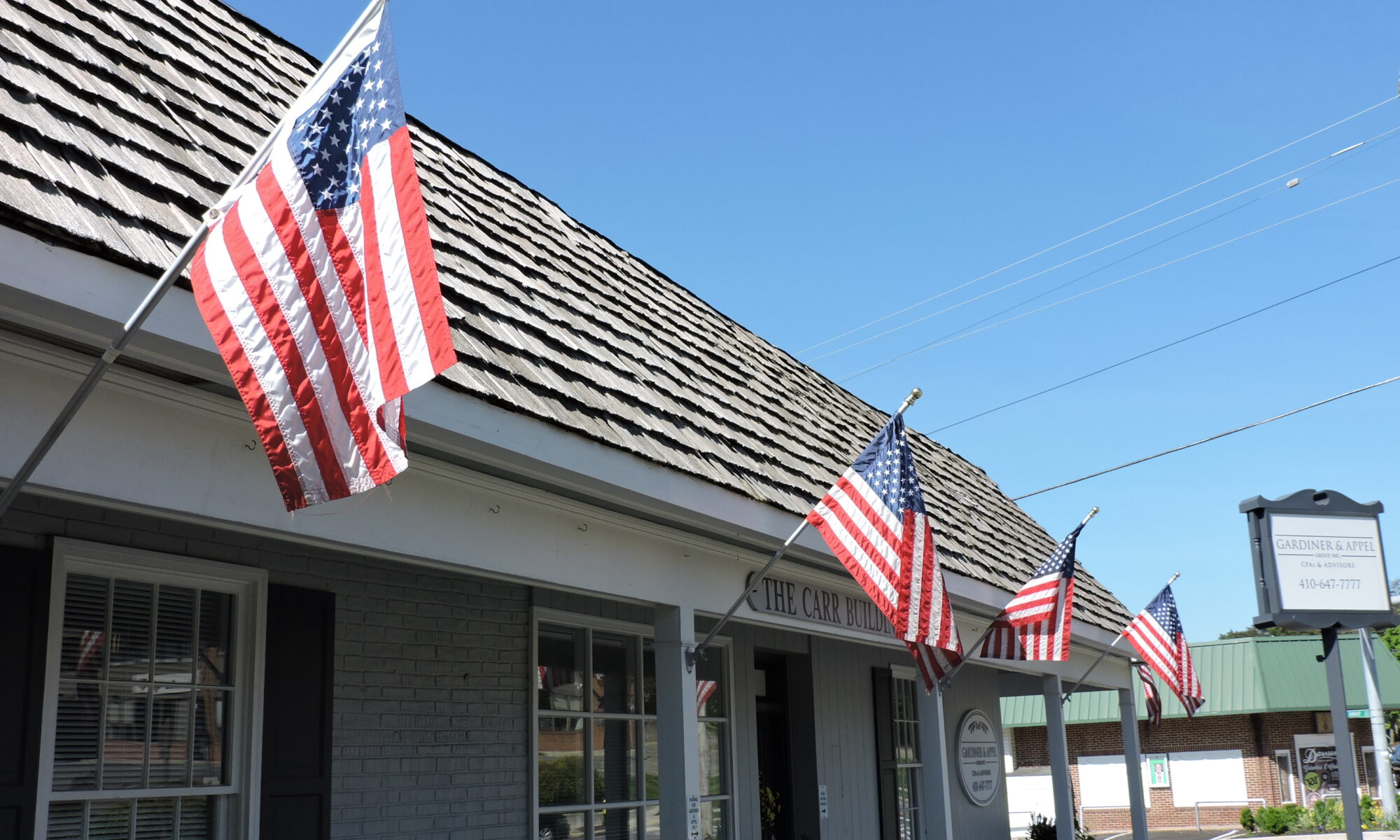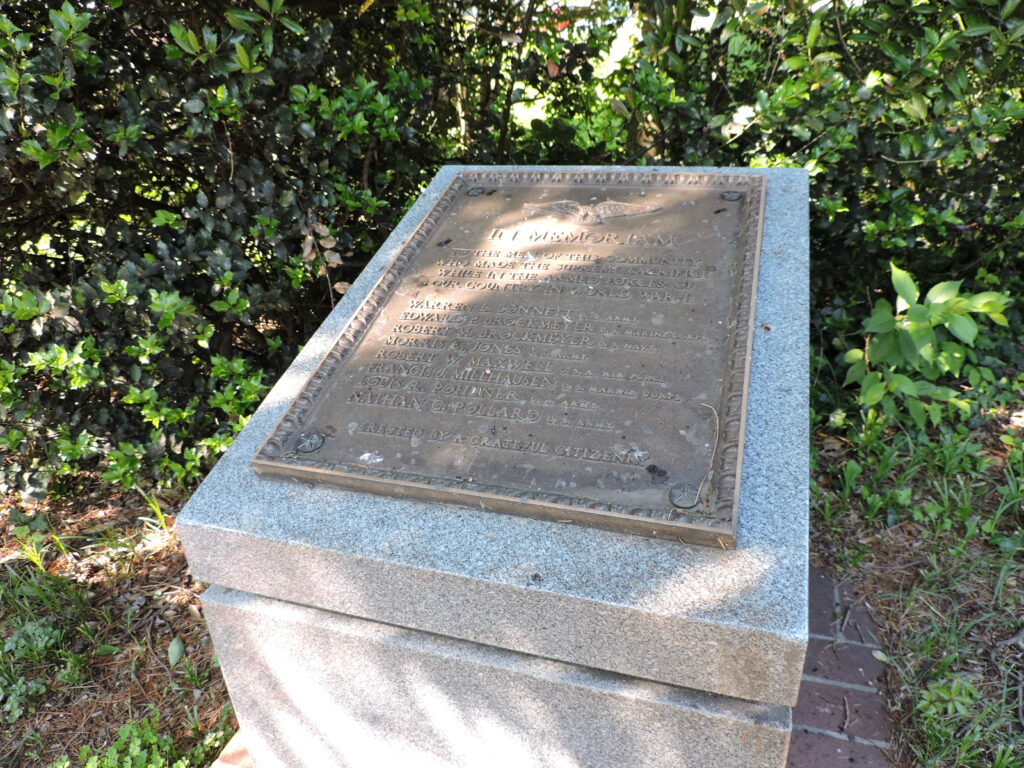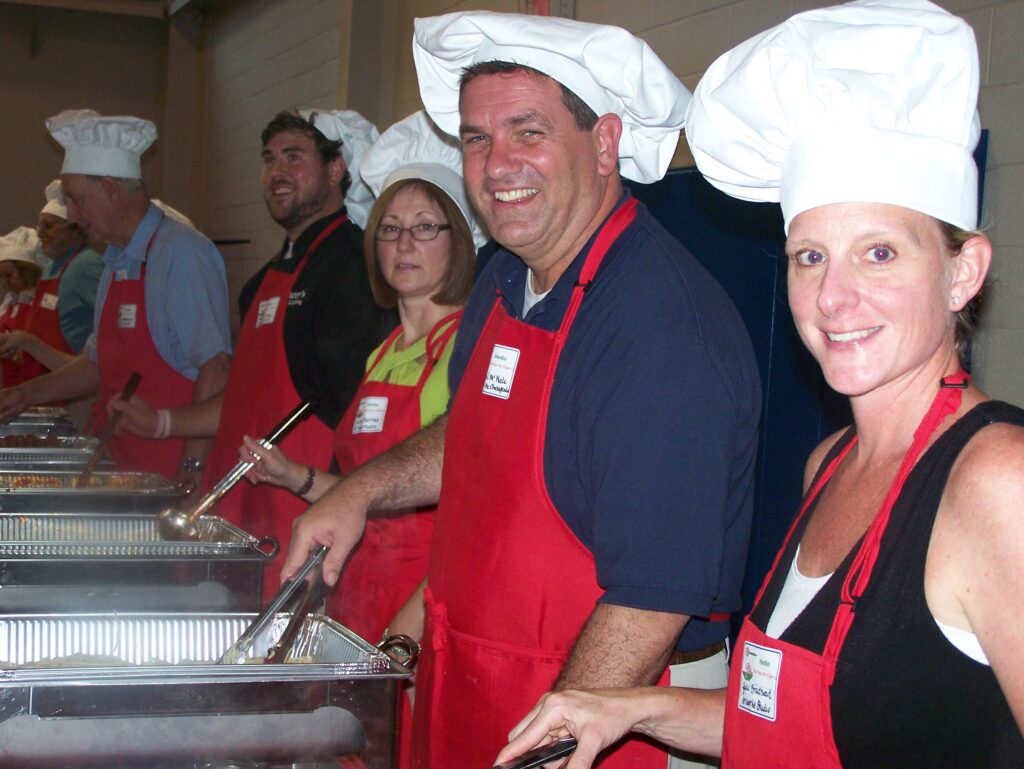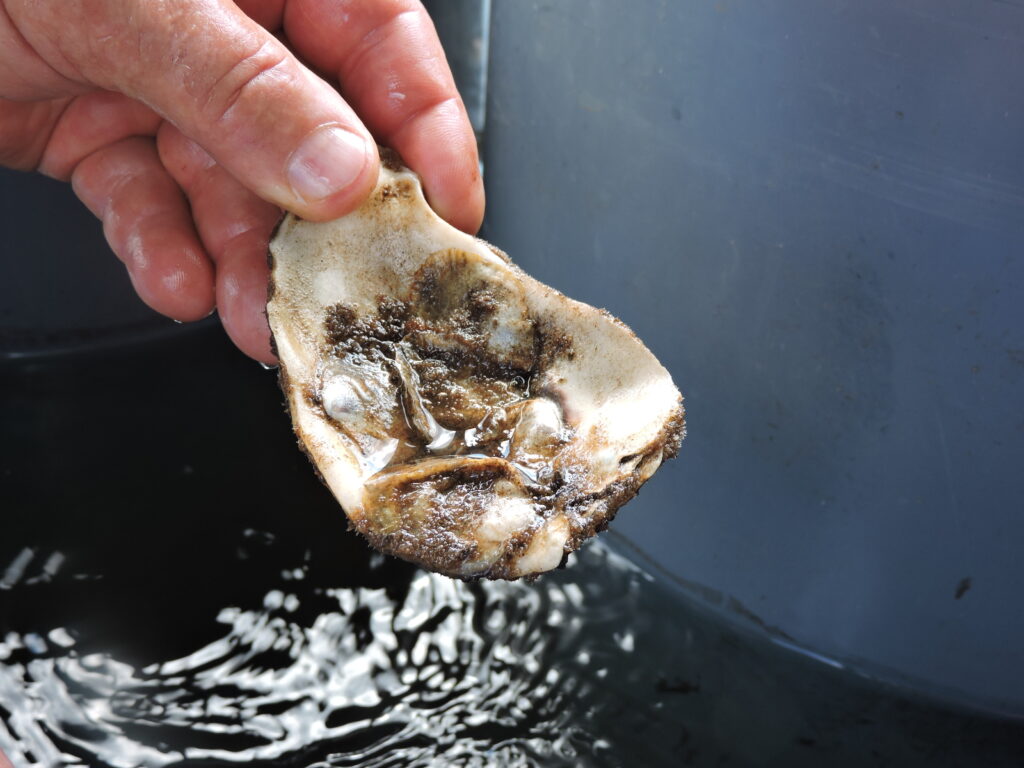AROUND THE PARK AGAIN by Sharon Lee Tegler
Tuesday afternoon was sultry to say the least. Yet most of the small retail shops that call Severna Park home were surprisingly busy considering they only recently reopened following the COVID-19 lock-down. Though not by design, a beach theme seemed to prevail in six of the businesses we visited.

COVID-19 guidelines. (Photos by Sharon Lee Tegler.
At Park Plaza, shoppers strolled between shops ranging from The Wild Bird Center to Image Creators Spa, Salon and Boutique and JOANN Fabric and Craft Store.
A sign outside The Cottage stressed that only 10 people could be in the store at a time to comply with COVID-19 guidelines – a number that is about normal for the store.
Walking through the door, shoppers immediately spotted the shop’s clever “Beach House” display created by several young staffers.

Wearing designer masks made locally, staffers Morgan Hall and Emma Moore were excited to be back at work and doing a brisk business at the checkout counter.
Manager Courtney Coughy said The Cottage offered online shopping throughout the lock-down so transitioning back to being open was relatively easy but held some surprises.
“Who’d have thought face masks would be this year’s fashion statement,” Coughy said.
She added that customers seemed delighted to be visiting the store in spite of the requirement to wear masks.. They were very interested in the popular Vera Bradley handbags marked down 50% for an end of summer sale and loved the “Maryland Table” with its Eastern Shore motif and items ranging from china and pottery to Old Bay seasonings.
Further down the plaza, the beach theme was carried through at Side Street Framers & Gift Gallery with its “Sidewalk Sale” where artwork featured crabs.


Inside, were oyster shell prints by local artist Kim Hovell and beautiful displays of Sea Glass jewelry from Jessica Graves and Cathy Kelly
Co-owner Dawn Wilson noted that Side Street Framers made several changes to comply with COVID-19 guidelines. They’d offered online ordering with curbside pick-up for several weeks while working to rearrange the store for its opening on June 1.
“We moved our picture framing operation to the back of the store and protected that area with a Plexiglas screen between ourselves and the customer,” Wilson said. “That allowed us to create an open and airy space at the front of the store for artwork and objects for the home that we really like”
She noted that sales have been picking up fairly well – particularly the framing business for which there is always demand.
Across Park Plaza at Park Home, customers strolled leisurely past billowing pillows, racks of candles, trendy vinyl floor cloths and a handsome black antique chest restored and hand painted by co-owner Heather Summers.

Seaside colors 
and sea shell patterned vases

Husband and co-owner Scott pointed out that the chest had been sold. The Summers said they implemented proper state-mandated changes related to the pandemic before opening June 1st.
“Like other merchants we’ve done online sales which helped pay the rent….but now it’s back to business as usual. Things are slowly returning to normal – especially since the restaurants reopened and people feel more comfortable,” Heather said.
“There have been challenges, however – namely supply issues. We do a lot of custom ordering for our patrons and we can’t get a decent turnaround time because delivery times are up in the air. Our vendors’ production is slowed because they have their own supply issues and because they’re working with their staffs at half capacity,”
At Franklin’s Toys, colorful trucks and bulldozers for playing in the sand and “air-conditioned” tents for children to crawl into to cool off appealed to shoppers headed to the seashore.


Customer Eliza Huebner had lots to choose from as she browsed the shelves with a shopping basket of toys on her arm.
“We’re going to the beach this weekend so I’m getting toys for our vacation,” she said. “I have a four-year-old girl and a little boy who is one-and-a-half. As you can see my basket’s getting full.”
According to Franklin’s Toys‘ owner Stephen Kaufmann, summer is usually a slow season and was a bit slower than usual when he reopened his Severna Park and Annapolis stores June 1. To comply with all Covid guidelines, he adjusted store hours which are Monday thru Thursday from 10 am till 6 pm, Friday and Saturday from 10 am to 8 pm and Sunday from 10 am to 5 pm.
“As people have become more comfortable shopping, sales are picking up – especially for hot selling items and anything outdoors,” Kaufmann said. “Since the pandemic, board games are more popular than ever but what’s really exploded are sales of jigsaw puzzles. Puzzle sales globally since COVID started are up 400 %.

The hottest trend at Franklin’s Toys is jigsaw puzzles. Since COVID=19, sales globally are up 400%
At Savvy Consignment at 545 Baltimore Annapolis Boulevard in Olde Severna Park, outdoor and indoor furnishings include a shady wooden bench, an airy table set for six and racks and racks of summer clothing including beachwear.

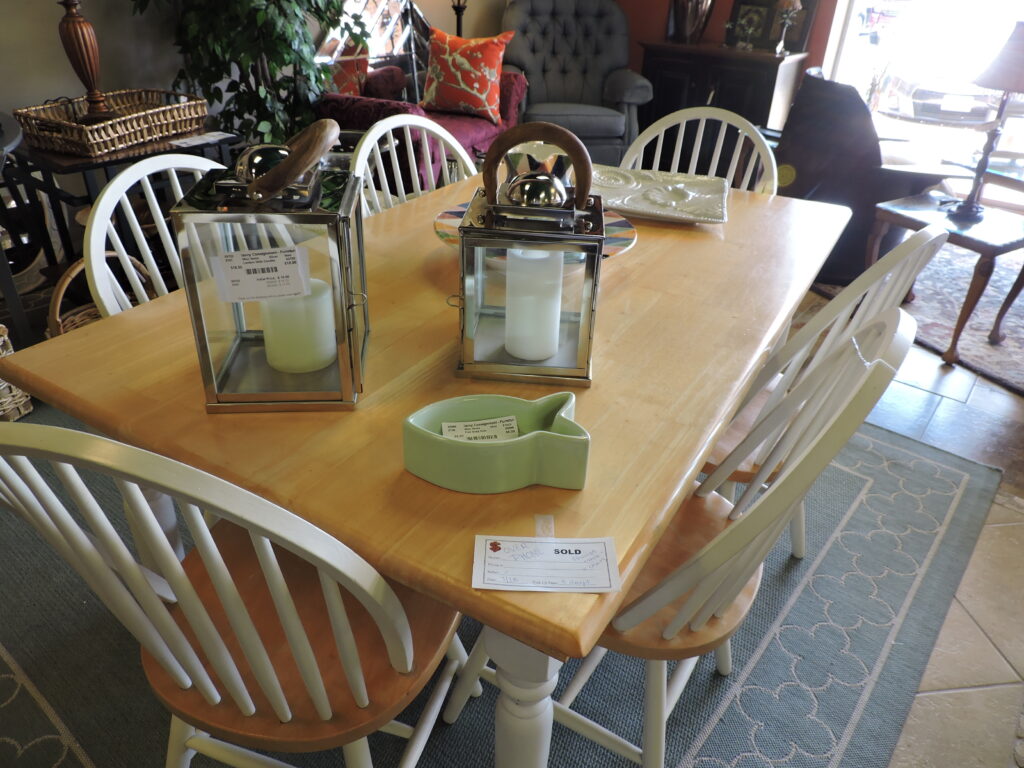
An airy table for six, bedecked with lanterns and a fish, also featured a “sold” tag. 
Racks and racks of summer clothes included sundresses and beachwear.
Savvy owner Stacey Cassidy said business has been good at the consignment store considering the oppresive weather. Social distancing is not a problem as there is plenty of room for customers . (In fact, half-capacity for the spacious store is 52 people.)
“We were a bit challenged because, when we closed in March for the lock-down, we had a store full of winter clothes. By the time we reopened, we’d missed our entire spring season,” Cassidy said. “However, two weeks before we were allowed to have customers in the store on June 1, we accepted curbside consignments of summer clothes. Consequently, we were well stocked when we opened our doors.”
Although wearing masks, Savvy Consignment’s customers seemed quite content while browsing for those special treasures. Many were “regulars” happy to be back.
Owners Danielle and Lance Bowen said The Blended Essentials, directly across Baltimore Annapolis Boulevard from Savvy, has implemented new sanitation practices within the shop in alignment with the CDC recommendations. Known for carrying 150 scents and essential oils, the shop hosts candle and soap making classes, summer camps and house parties – many of which are pre-booked. As the shop returns to normal operations, they’ll limit the number of customers allowed in the shop. However, as employee Anna Vernacchio noted, The Blended Essentials backs onto the B&A Trail so there is plenty room outside for classes.

For those of you who are engaged or interested in community news, please subscribe.









